Akimasa Kataoka
Website Akimasa Kataoka
NEWS
Became an assistant professor at Division of Thoeretical Astronomy, NAOJ (December 1st, 2017)
New paper is out! HL Tau ALMA polarization (July 7th, 2017)
Planets form in protoplanetary disks via dust coagulation. Then, how can we measure the size of growing dust grains? We have theoretically proposed that we can constrain the grain size from millimeter-wave polarization observations of protoplanetary disks, produced by dust scattering. In this context, we observe the protoplanetary disk around HL Tau, which shows multi-ring structure presumably caused by unseen planets in the gaps, with the ALMA polarization mode. We find that the polarization is produced not by the grain alignment with magnetic fields but by the combination of the grain alignment with the radiation fields and the self-scattering of thermal dust emission, which we proposed in 2015. Also, by modeling the self-scattered component, we find that the dust grains have a size of 100 micron in the protoplanetary disk.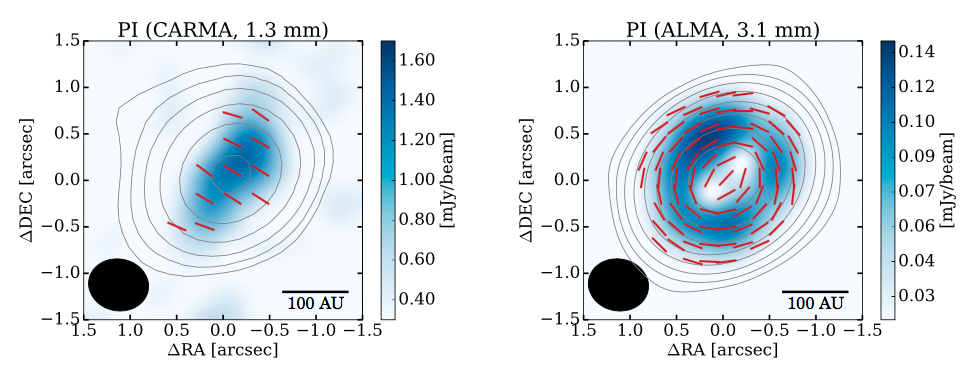
arXiv
Moved to NAOJ as a NAOJ fellow (April 1st, 2017)
hired as Humboldt Research Fellow (December 1st, 2016)
moved to Heidelberg University as a JSPS fellow (April 1st, 2015)
Award: Nagakura research award of SOKENDAI (March 24th, 2015)
I was awarded the Nagakura research award of SOKENDAI.see the webpage (Japanese)
PhD (Sep.30th, 2014)
The title of the thesis is "Planetesimal Formation via Fluffy Dust Aggregates"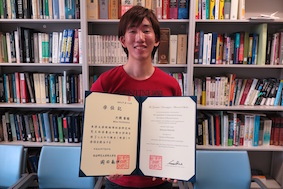
Division of Theoretical Astronomy, NAOJ
Award: President prize of SOKENDAI (April 7th, 2014)
I was awarded the president prize of SOKENDAI.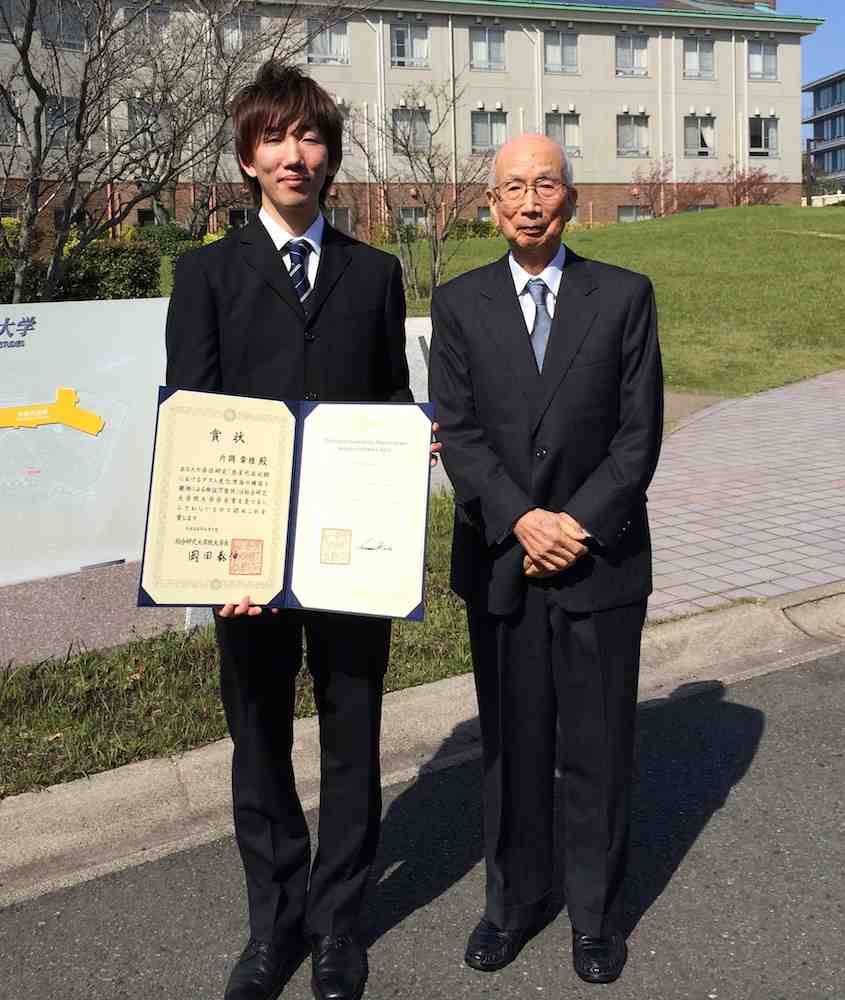
With my grandfather, on Hayama campus.
Award: Best Presentation Award (Nov.24, 2013)
I was awarded the best presentation prize at the Japanese Society for Planetary Sciences 2013: see the webpage (Japanese)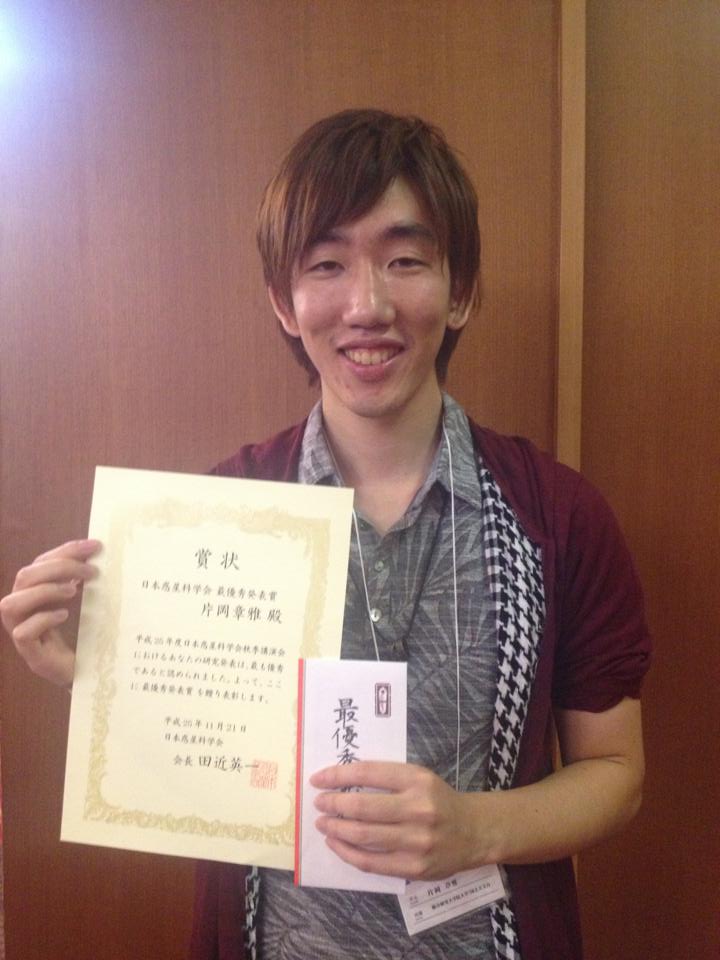
Press release: The seeds of planets are fluffy (Oct.4, 2013)
See the webpage for more details.
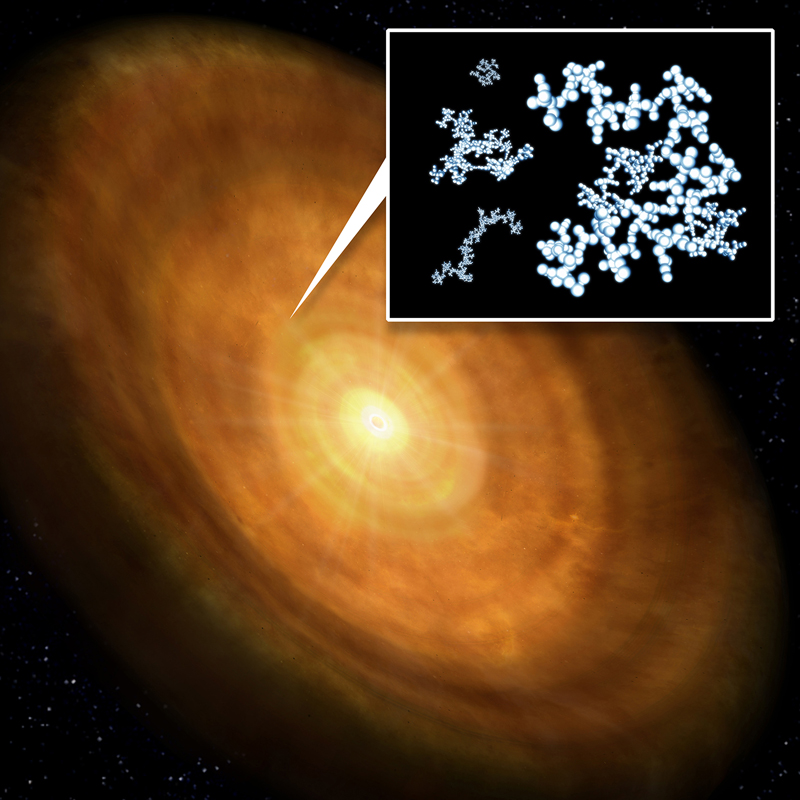
Planetesimal Formation via Fluffy aggregates:
the new paper was selected to highlighted papers of A&A again! (Aug.14, 2013)
See the highlighted papers of A&A for more details.
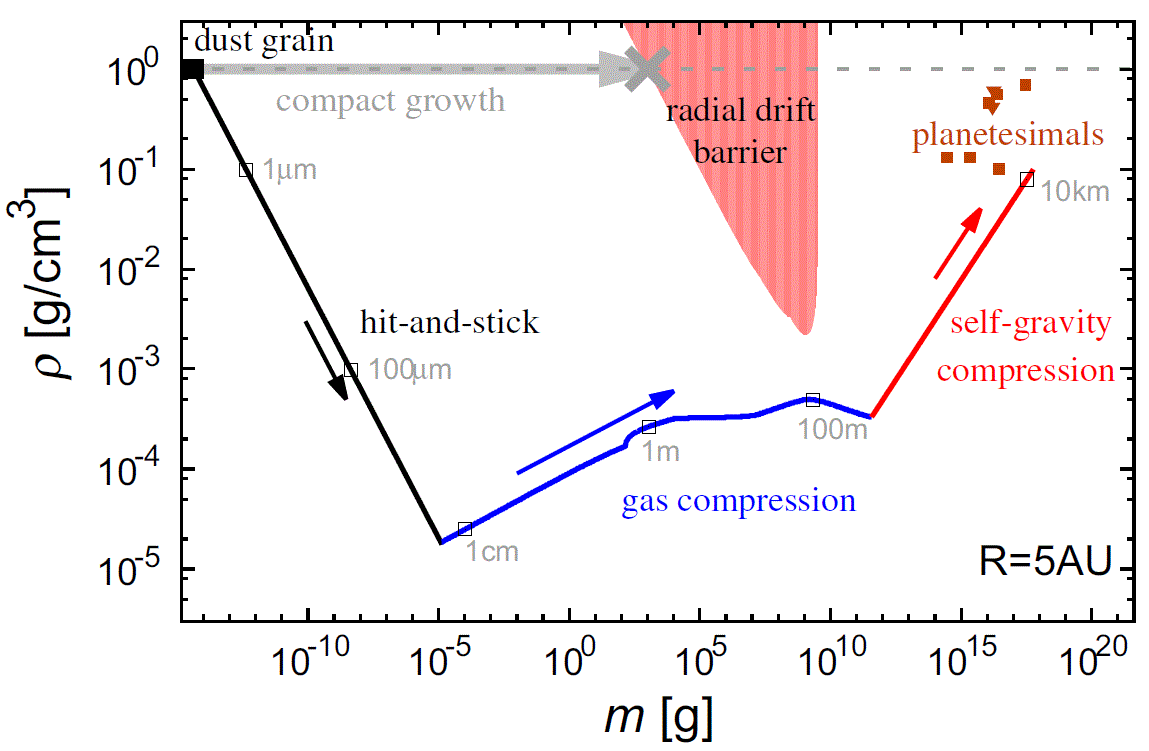
It has been a long-standing puzzle that millimeter- to meter-sized grains tend to drift very rapidly towards their parent star, particularly with observational evidence that these grains are present in circumstellar disks more or less independently of their age. The fact that these grains may be porous and not compact and would thus drift much more slowly has been advocated as a possible solution. Nevertheless, the puzzle has remained unsolved because asteroids and comets with a very low porosity (down to a density of 0.00001 g/cm^3!) have never been observed. The authors propose a way around this and show that grains should first grow by becoming extremely porous before being compacted by gas drag and then by self-gravity. This model can account for the observed population of comets and their comparatively high densities (about 0.1 to 1 g/cm3) by assuming that they are the remnants of planetesimals of sizes of order 10 km and beyond.
Static compression of porous dust aggregates:
the new paper was selected to highlighted papers of A&A! (May.28, 2013)
See the highlighted papers of A&A for more details.
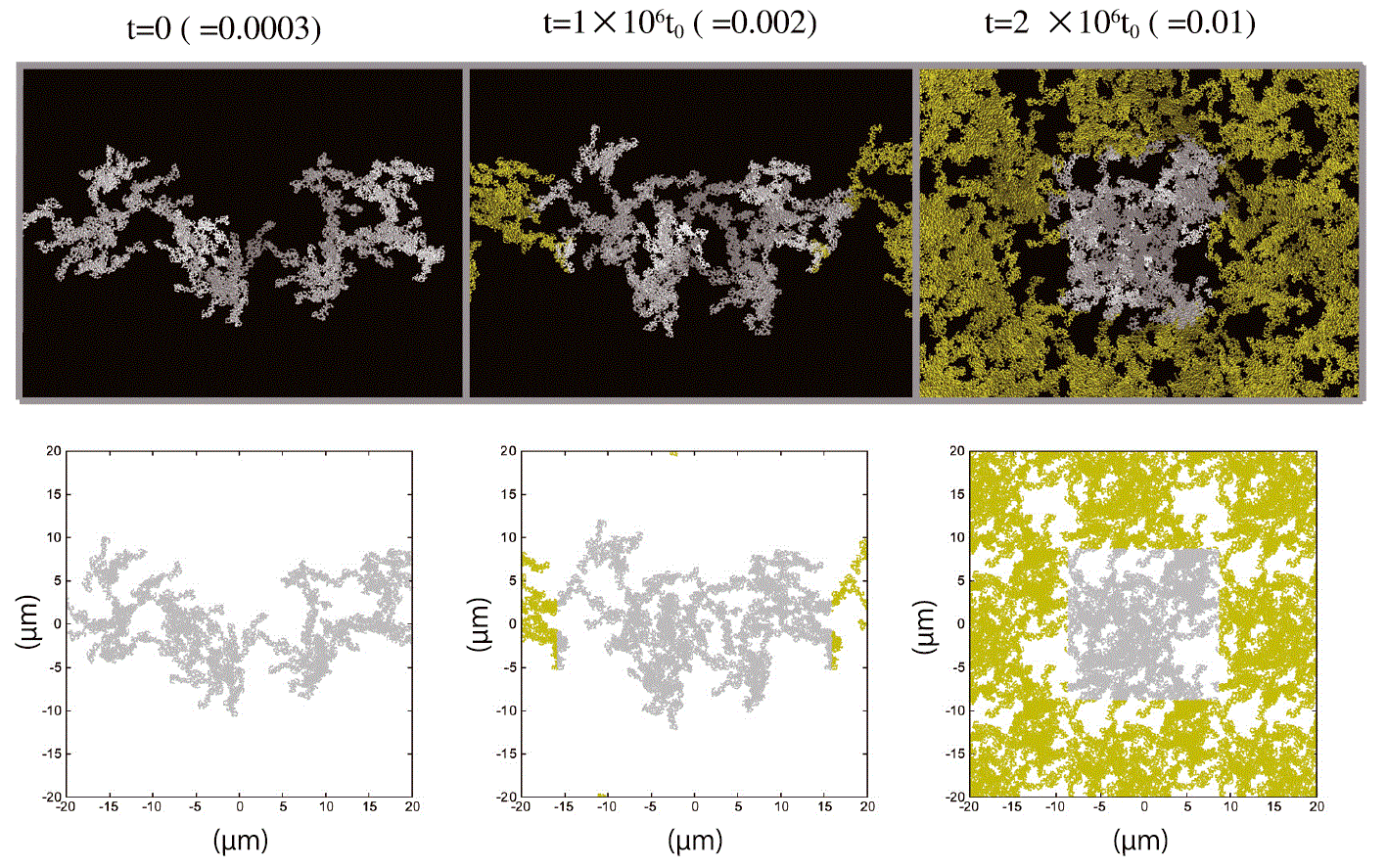
Understanding the structure and growth of ice particules in circumstellar disks is key in analyzing observations of these disks and inferring the consequences for planet formation. Grains had been considered spherical and compact, with a density equal to that of ice, i.e. about 1 g/cm3, until recent work has pointed out that growth tends to form fluffy, very fluffy aggregates with densities as low as 0.00001 g/cm3 and planetesimal sizes. However, no such objects have been observed today, and it is thus critical to understand how we can transform fluffy aggregates into (relatively) dense planetesimals. The work by Kataoka et al. is a first step in that direction: Using numerical experiments they derive a relation between the pressure that is applied to the aggregates (e.g., due to gas drag in the disk) and their filling factor (i.e., their physical density). They show that the filling factor is equal to the size of the monomers forming the aggregates multiplied by the cube root of the ratio of the pressure that is applied to the roll energy of the monomers. This relation will be crucial for understanding the history of the evolution of grains and planetesimals in disks.